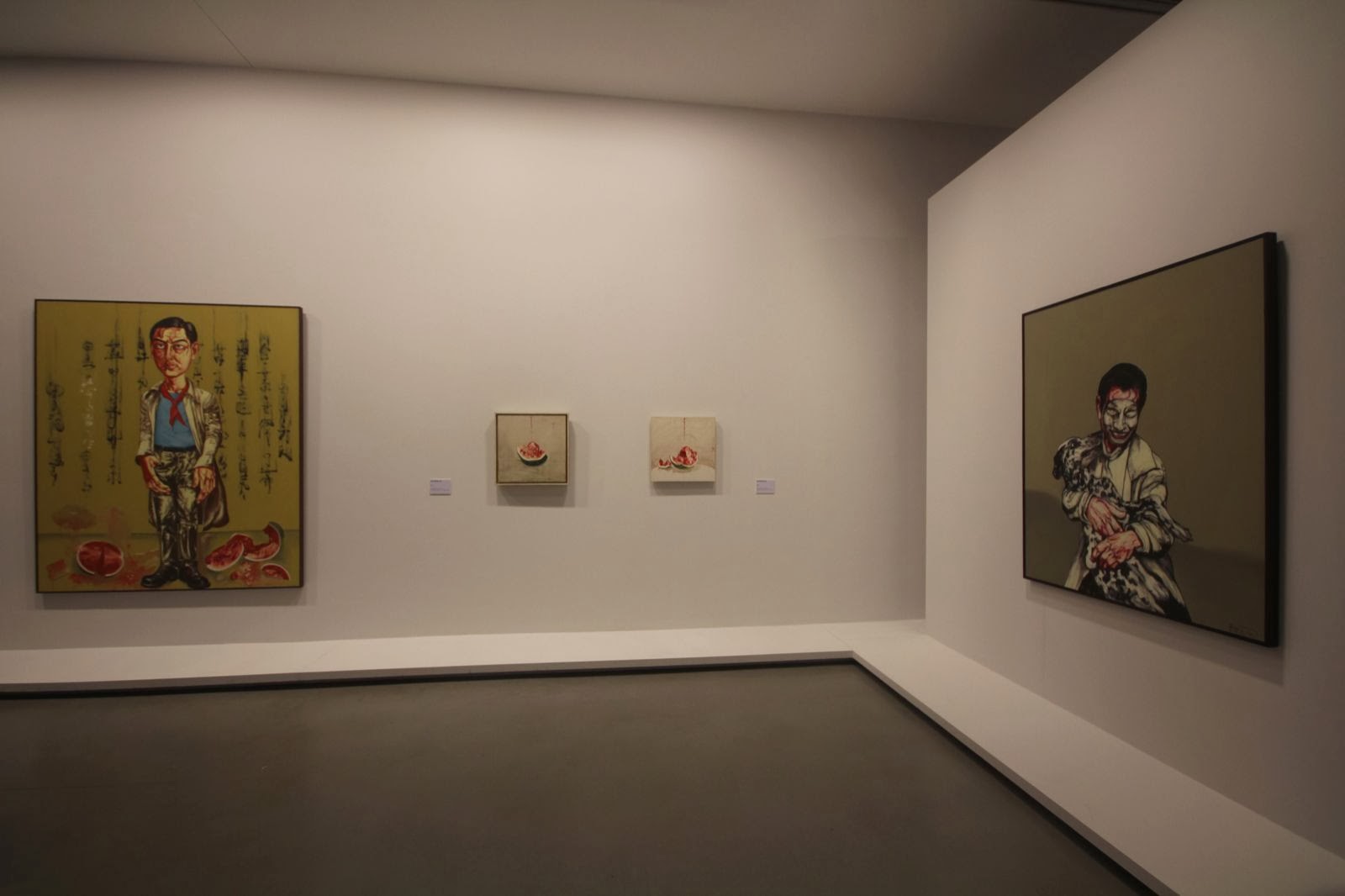It covers the painter's career in reverse-order presentation, from 2013 back to 1990 - arranged across themes in five rooms for Landscapes, "The Form Chosen is of no Importance", Masks, The Individual and the Masses, and Hospitals.
Within each theme, and depending on the period of time the painter was working in, there is a pervasive image that you see over and over again until you move to the next room.
Zeng Fanzhi's work is influenced by both Chinese and Western contemporary art. I took my time with this one and really did enjoy it, before moving on to another MAM exhibit of Serge Poliakoff's work - but that's for a whole other post.
Here's what I saw today.
Landscapes:
The exhibition opens with a large landscape that was created especially for this exhibition.
"The Form Chosen is of No Importance"
This quote is attributed to the painter. He is said to be fond of remarking that [the form] comes to him gradually as he paints and is never fundamental.
According to the printed MAM info, Zeng Fanzhi began his Masks series in 1994 after moving to Beijing, and for ten years he painted isolated figures, in ones or twos, all masked.
These paintings were a result of his own solitude even in a city of over ten million, when he realised that "no one can live without a mask" and that the personalities of the people he met were never what they seemed.
The Individual and the Masses:
This was the final room and it was dedicated to the artist's early works. Some of the works presented here were painted whilst Zeng Fanzhi was still a student. The hospital theme explained: Zeng Fanzhi lived near a hospital which was the only place where students could take a bath, and he went there every day.
Another theme - also very present in his earlier work, which I did not photograph, was the Meat Series, which is in some of the pictures below. The Meat theme explained: on hot days he saw workmen resting on sides of frozen meat from a processing plant, and began to paint them.




















No comments:
Post a Comment